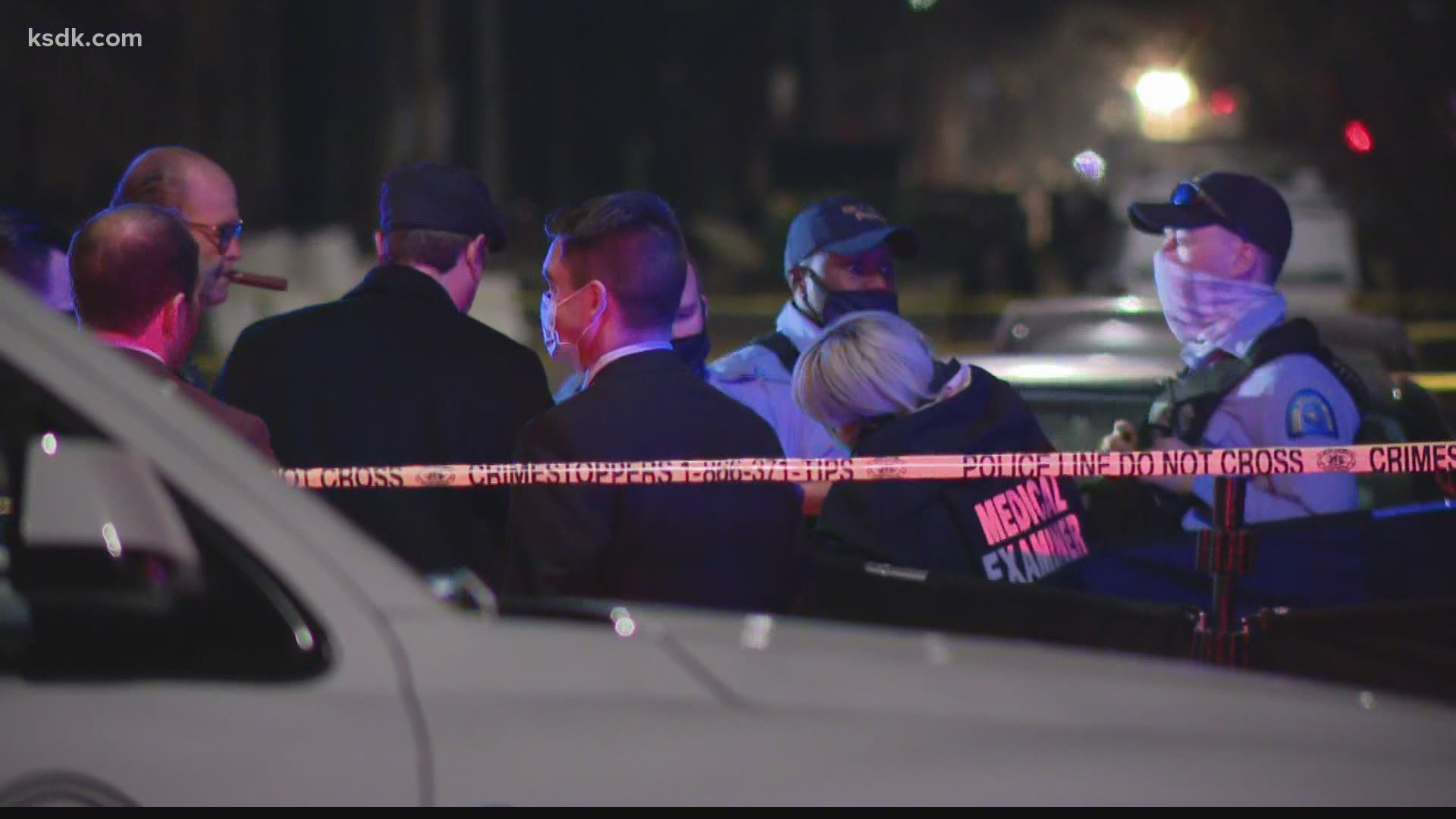ST. LOUIS — This week, a 9-year-old boy was gunned down inside his mother’s car.
Less than 24 hours later, a 14-year-old was shot to death in another St. Louis neighborhood.
And it’s only Tuesday.
Their deaths are among the nine more homicides St. Louis has seen so far this year compared to the same time frame in 2020 — which went down as the deadliest year, per-capita, the city has ever seen.
Chief John Hayden has been at the helm through it all — meaning the city’s highest homicide rates will forever mark his legacy.
He opened up about his strategies, his response to a consultant’s critical review of his administration as well as what he expects from the community during an interview with 5 On Your Side Tuesday.
His remarks come just weeks before the next mayoral election, in which both candidates told 5 On Your Side’s Rhyan Henson public safety leadership needs to move in another direction. Hayden became chief after Chief Sam Dotson abruptly retired on Mayor Lyda Krewson's first day in office.
Henson asked Tishaura Jones and Cara Spencer if they would keep current law enforcement leadership intact, which includes Hayden and his boss, Public Safety Director Jimmie Edwards.
Jones said: "We have to go in a different direction."
Spencer said: "We have got to take a new fresh approach here."
But until he’s told otherwise, Hayden said he’s got work to do.
“Every chief owns the homicide rate,” Hayden said. “But I would tell folks that we are doing what they would expect and trying to solve these cases.
“And we're having some successes. And we're cautiously optimistic about some things that we've implemented that will help us.”
Those strategies include:
- Mission zones — Smaller, more focused target areas where police are being asked to step up community engagement, patrols, pedestrian checks, traffic stops and other self-initiated activities — much of which Hayden ordered officers to cease during the height of the pandemic to keep officers and citizens safe from exposure. Hayden said the locations of the mission zones are data-driven and rotate about every three weeks. That is the time frame the Crime Analysis unit has recommended as the best way to implement a strategy and measure its success, Hayden said.
- Promoting resources to crime victims and witnesses — The state legislature passed House Bill 66, to make more money available to help with relocation costs or other expenses crime victims and witnesses might need in order to feel safe enough to cooperate with the police. Hayden said he’s asking homicide detectives to tell community members about those resources.
- Announcing arrests before charges are issued — In a departure from protocol, the police department has begun releasing names and mugshots of those they arrest for homicides before Circuit Attorney Kim Gardner’s office charges them with a crime. Hayden said releasing arrest information regardless of whether charges get issued, “Reassures people that we actually are making progress on a lot of these cases.”
At least one of the strategies isn’t entirely new for the St. Louis Police Department.
Hayden said the “mission zone” concept is very similar to the “hot-spot policing” the department was doing before he took the reins in December 2017.
When he first arrived, he formed what became commonly known as “Hayden’s rectangle,” an area of the city bordered by boarded by Goodfellow Boulevard, Vandeventer Avenue, Martin Luther King Drive and West Florissant Avenue where most of the violence occurred.
“We have evolved out of that concept,” he said.
The concept was noted in a report by the Teneo Group, a private consulting firm the business community paid to evaluate the department.
It also noted Hayden’s Rectangle approach had dwindled through the years, and, “when asked directly if they were aware of a formalized crime plan, none of the interviewees expressed definitive awareness.”
“Without a clearly communicated crime plan, the agency is constantly in ‘fire-fighting’ mode, leading to officer burn-out and persistent rates of crime and disorder,” the report read.
It continued: “The department should create and implement a more data-driven, community -focused, long-term crime-fighting strategy.”
Hayden said he found the report “constructive.”
“Their goal was to make us more efficient and I think we have addressed and embraced those things,” he said. “They didn't say that we weren't doing any of those things.
“They were saying there's some redundancy, duplication of efforts, and there's some gaps that you need to close. And we have. Over the past several weeks, the senior commanders have worked on that. And we believe that we are nearing the end of a product that addresses some of the concerns raised in the Teneo report.”
He also noted 85% of homicides are attributed to people that are at least loosely acquainted with one another.
“I don't know that there's a plan, per se, that prevents these personal disputes which result in gun violence,” Hayden said.
He also added his peers leading departments in metropolitan areas throughout the country also saw 30% spikes in their homicide rates in 2020.
“I understand people are very frustrated,” he said. “I think the best thing they can do is share information with the homicide division.
“If you're uncomfortable doing that, we constantly say reach out to CrimeStoppers and share the information anonymously.”

